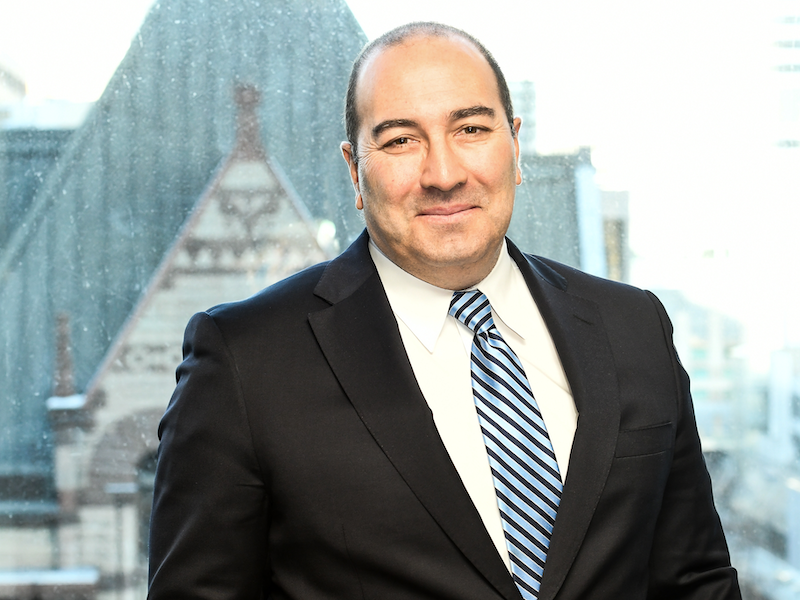

In the current market, institutional investors should consider increasing allocations to real estate and real estate investment trusts, said Joseph Shaw, managing partner and head of institutional sales at Hazelview Investments, during the Canadian Investment Review’s 2022 Defined Benefit Investment Forum.
In the past decade, the average defined benefit pension plan’s allocation to real estate has risen, he said, noting, because some real estate assets are de-sensitized to rises in inflation and interest rates, direct and indirect investing in real estate can improve portfolios’ risk profiles in the current market environment, which is defined by high interest rates and inflation.
In the U.S. alone, commercial real estate now represents 15 per cent of the investment class, behind equities and bonds in terms of portfolio share. To the north, it may play an even larger role in portfolios. “Canadian pension funds own approximately $300 billion of Canadian real estate, making them the largest owners,” he said.
In 2021, institutional real estate portfolios were up, on average, 17 per cent globally. In terms of transaction volumes, it was also a record year — 22 per cent higher than any other, according to Shaw. Although the sector is expecting decreases in value, he said he expects allocations to rise by 30 basis points in 2023. “It’s institutional ownership — there’s no incentive to sell. Our property market . . . is one of the most stable globally and has a great impact on how we’ll weather this next recession.”
Read: 2022 DCIF: How DC plan sponsors can use REITs to meet investment objectives
The low-risk and high yields gained from real estate make it a good alternative to fixed income — and some strategies are likely to truly shine in the current environment, he added. “Real estate’s long been touted as an inflation hedge.”
For smaller pension plans, Shaw said he favours the use of REITs, which have provided a strong total return over the last 25 years. At 9.9 per cent, they’ve outperformed indexes like the S&P 500 and the Russell 3000. More importantly, investors have the ability to use these assets to reduce the volatility of their overall portfolio, he said, noting REITs have a beta of only 0.75 per cent.
They also have an advantage over private real estate when it comes to liquidity and their ability to gain immediate diversification — in geographic terms as well as across property types. “I could make the argument today that public real estate is structurally an arbitrage. At any given moment in time, REITs find properties and capture the risk premium associated with the illiquid assets, but the shares carry no illiquidity premium.”
All commercial leases have embedded consumer price index inflationary adjustments, added Shaw, noting rents move up by some prescribed formula based on the CPI at the anniversary of lease start dates. But that’s only part of the story — most commercial leases are 10 years in length. Ultimately, this creates an opportunity to capture favourable market pricing in the long term, he noted, cautioning that the hedging strategy only works if occupancy is small.
Read: 2022 Risk Management Conference: How economic cycles impact global REITs
Within the Canadian multi-family sector, demand is set to rise, said Shaw, noting its vacancy rate is currently about one per cent, which has held steady for many years, and these buildings have seen double-digit increases in rents over the last year. By contrast, in the Greater Toronto Area, vacancy in class C offices has risen from three per cent to 18 per cent vacancy in the last three years.
“We believe . . . that zero economic rent deals will get struck in that space because the landlords are trying to keep the lenders at bay. . . . And so, there’s a real decrease in long-term value of this lower-quality real estate.
“Today, the U.S. REIT markets are down 25 per cent, the S&P 500 is down 15 per cent. I think there’s a strong probability it’s going to get worse,” he continued. “I think there will be great buying opportunities over the course of the next 12 to 18 months . . . on both the private real estate side as debt causes pain for existing landlords, [as well as] opportunities to exploit the public market inefficiencies. The drawdown has happened — I don’t think it’s over — and that’s when you want to buy REITs.”
Shaw also predicted that outdated retail will be demolished or compressed to make way for apartment buildings. “Canada will have 10 million more people in the next 20 years,” he said, noting 80 per cent of those immigrants will be renters for the first one to three years. He also noted there will be around 750,000 students, who aren’t included in the immigration numbers, living in Canada by that time.
“On an individual basis, they’re all mostly transient. As a population, that’s a huge demand driver for residential rental real estate.”
Read: Pension plan sponsors push on with real estate investments despite Omicron setback
